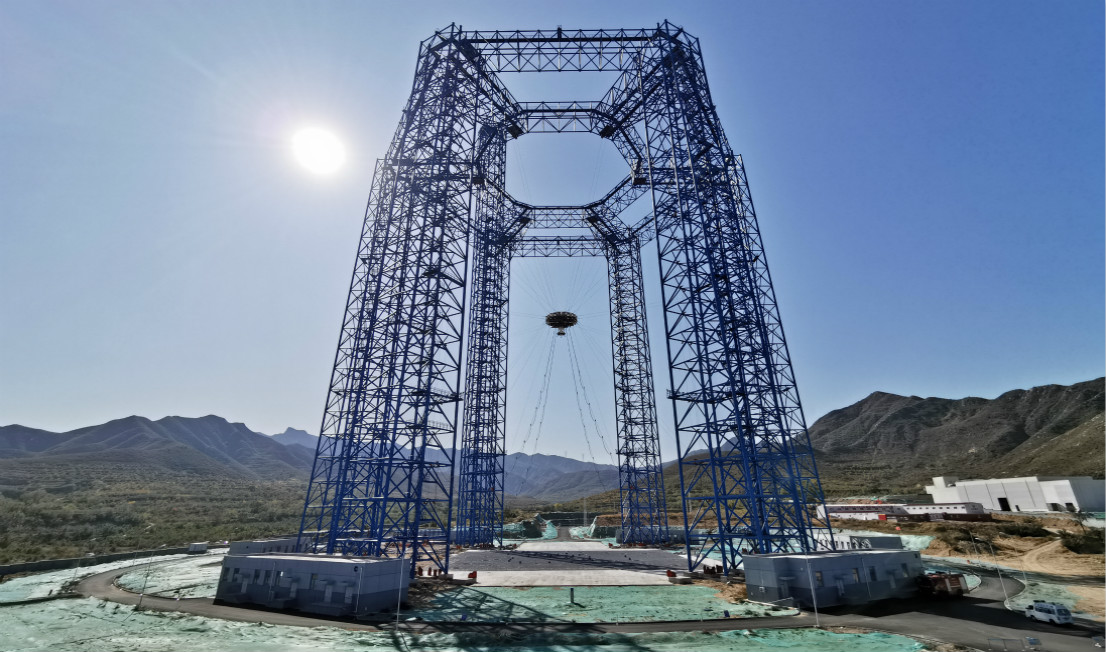
Watch China Simulate a Mars Landing for 2020 Mission to Red Planet (Video)
The test marks a big step toward a planned launch next year.
China just tested out its brand-new facility for simulating Mars landings, marking a big step in the nation's planned march to the Red Planet.
The facility in northern China's Hebei Province includes a tower nearly 460 feet (140 meters) tall, a servo system and a Martian surface simulation area.
The highly touted test yesterday (Nov. 14) is prelude to China launching a Mars mission in 2020 — a project that aims to complete orbiting, landing and roving all in one go, according to the China National Space Administration (CNSA).
Video: Watch China Test Drop Its 1st Mars Lander!
Related: Robots on Mars! Meet the Machines on the Red Planet Today
The recent experiment simulated the gravity of Mars, which is about three-eighths that of Earth, to test the design of the lander, China's state-run Xinhua news agency reported.
Ambassadors and diplomats from 19 countries including France, Italy and Brazil, as well as representatives from the European Union, the African Union and the Asia-Pacific Space Cooperation Organization were invited to watch the experiment, according to Xinhua.

Landing procedure
China needed to build the new facility to simulate landing procedures under Mars' gravitational acceleration, Zhang Rongqiao, chief designer of China’s first Mars exploration mission, told Xinhua.
Get the Space.com Newsletter
Breaking space news, the latest updates on rocket launches, skywatching events and more!
A red platform in the middle of the pylons is fixed by 36 steel cables. Through precise control, Xinhua reported, the platform is able to simulate the Martian gravitational environment.
On the ground underneath the pylon tower, engineers created slopes and craters to mimic the environment of the Martian surface.
Obstacle-avoiding mode
According to Xinhua, yesterday's test verified multiple procedures, including the lander’s separation from the main body of the spacecraft from a 230-foot (70 m) altitude; hovering at 220 feet (67 m) above the surface and searching for a safe spot to touch down; and descending to 65 feet (20 m) above the surface in obstacle-avoidance mode.
Zhang Kejian, administrator of the CNSA, told Xinhua that China’s Mars exploration program has progressed well since its official kickoff in 2016. The hovering and obstacle avoidance test for the Mars lander is a crucial step for the project, Xinhua reported.
- China On the Moon! A History of Chinese Lunar Missions in Pictures
- Latest News About China's Space Program
- Photos from the Moon's Far Side! China's Chang'e 4 Lunar Landing in Pictures
Leonard David is author of the recently released book, "Moon Rush: The New Space Race" published by National Geographic in May 2019. A longtime writer for Space.com, David has been reporting on the space industry for more than five decades. Follow us on Twitter @Spacedotcom or Facebook.

Join our Space Forums to keep talking space on the latest missions, night sky and more! And if you have a news tip, correction or comment, let us know at: community@space.com.

Leonard David is an award-winning space journalist who has been reporting on space activities for more than 50 years. Currently writing as Space.com's Space Insider Columnist among his other projects, Leonard has authored numerous books on space exploration, Mars missions and more, with his latest being "Moon Rush: The New Space Race" published in 2019 by National Geographic. He also wrote "Mars: Our Future on the Red Planet" released in 2016 by National Geographic. Leonard has served as a correspondent for SpaceNews, Scientific American and Aerospace America for the AIAA. He has received many awards, including the first Ordway Award for Sustained Excellence in Spaceflight History in 2015 at the AAS Wernher von Braun Memorial Symposium. You can find out Leonard's latest project at his website and on Twitter.









